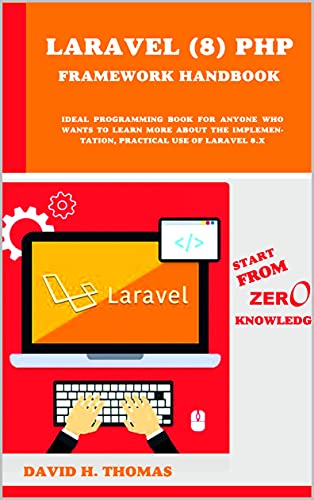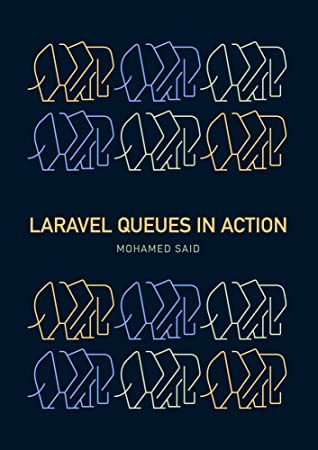Head First Python: A Brain-Friendly Guide 2nd Edition by Paul Barry is a PDF book for free download.
Want to learn the Python language without slogging your way through how to manuals? With Head First Python, you’ll quickly grasp Python’s fundamentals, working with the built in data structures and functions.
Then you’ll move on to building your very own webapp, exploring database management, exception handling, and data wrangling. If you’re intrigued by what you can do with context managers, decorators, comprehensions, and generators, it’s all here. This second edition is a complete learning experience that will help you become a bonafide Python programmer in no time.
Why does this book look so different? Based on the latest research in cognitive science and learning theory, Head First Pythonuses a visually rich format to engage your mind, rather than a text heavy approach that puts you to sleep.
Why waste your time struggling with new concepts? This multi sensory learning experience is designed for the way your brain really works.
About 'Head First' Books
We think of a Head First Reader as a Learner
Learning isn't something that just happens to you. It's something you do. You can't learn without pumping some neurons. Learning means building more mental pathways, bridging connections between new and pre-existing knowledge, recognizing patterns, and turning facts and information into knowledge (and ultimately, wisdom). Based on the latest research in cognitive science, neurobiology, and educational psychology, Head First books get your brain into learning mode.
Here's how we help you do that:
We tell stories using casual language, instead of lecturing. We don't take ourselves too seriously. Which would you pay more attention to: a stimulating dinner party companion, or a lecture?
We make it visual. Images are far more memorable than words alone, and make learning much more effective. They also make things more fun.
We use attention-grabbing tactics. Learning a new, tough, technical topic doesn't have to be boring. The graphics are often surprising, oversized, humorous, sarcastic, or edgy. The page layout is dynamic: no two pages are the same, and each one has a mix of text and images.
Metacognition: thinking about thinking
If you really want to learn, and you want to learn more quickly and more deeply, pay attention to how you pay attention. Think about how you think. The trick is to get your brain to see the new material you're learning as Really Important. Crucial to your well-being. Otherwise, you're in for a constant battle, with your brain doing its best to keep the new content from sticking.
Here's what we do:
We use pictures, because your brain is tuned for visuals, not text. As far as your brain's concerned, a picture really is worth a thousand words. And when text and pictures work together, we embedded the text in the pictures because your brain works more effectively when the text is within the thing the text refers to, as opposed to in a caption or buried in the text somewhere.
We use redundancy, saying the same thing in different ways and with different media types, and multiple senses, to increase the chance that the content gets coded into more than one area of your brain.
We use concepts and pictures in unexpected ways because your brain is tuned for novelty, and we use pictures and ideas with at least some emotional content, because your brain is more likely to remember when you feel something.
We use a personalized, conversational style, because your brain is tuned to pay more attention when it believes you're in a conversation than if it thinks you're passively listening to a presentation.
We include many activities, because your brain is tuned to learn and remember more when you do things than when you read about things. And we make the exercises challenging-yet-do-able, because that's what most people prefer.
We use multiple learning styles, because you might prefer step-by-step procedures, while someone else wants to understand the big picture first, and someone else just wants to see an example. But regardless of your own learning preference, everyone benefits from seeing the same content represented in multiple ways.
We include content for both sides of your brain, because the more of your brain you engage, the more likely you are to learn and remember, and the longer you can stay focused. Since working one side of the brain often means giving the other side a chance to rest, you can be more productive at learning for a longer period of time.
We include challenges by asking questions that don't always have a straight answer, because your brain is tuned to learn and remember when it has to work at something.
Finally, we use people in our stories, examples, and pictures, because, well, you're a person. Your brain pays more attention to people than to things.
About the Author
Paul Barry is formally educated and trained in Computer Science and holds a Masters Degree in Computing Science. He has been programming professionally, on and off, for close to 25 years. Paul already has two textbooks to his name, and is also a Contributing Editor to Linux Journal magazine.
His day job is with the Institute of Technology, Carlow in Ireland where he has spent over a decade preparing Ireland's next generation of computing folk to be productive in the workforce. His role as a third level educator affords him the opportunity to explore, learn and teach the very latest programming technologies and practices, which is something that he enjoys even though he knows this makes him a bonafide "geek".
Paul lives just outside the town of Carlow in Ireland with his wife, two sons, daughter, dog and cat. There's a bunch of computers and a growing collection of music instruments in the house, too (and like a lot of the Head First family, Paul is a struggling guitarist trapped inside a geek's body). He has so far resisted any suggestion that the family acquire a hamster ... or a set of drums.
CONTENTS:
1 The Basics: Getting Started Quickly
2 List Data: Working with Ordered Data
3 Structured Data: Working with Structured Data
4 Code Reuse: Functions and Modules
5 Building a Webapp: Getting Real
6 Storing and Manipulating Data: Where to Put Your Data
7 Using a Database: Putting Python’s DB-API to Use
8 A Little Bit of Class: Abstracting Behavior and State
9 The Context Management Protocol: Hooking into Python’s with Statement
10 Function Decorators: Wrapping Functions
11 Exception Handling: What to Do When Things Go Wrong
11¾ A Little Bit of Threading: Dealing with Waiting
12 Advanced Iteration: Looping like Crazy
A Installing: Installing Python
B Pythonanywhere: Deploying Your Webapp
C Top Ten Things We Didn’t Cover: There’s Always More to Learn
D Top Ten Projects Not Covered: Even More Tools, Libraries, and Modules
E Getting Involved: The Python Community
About The Book:
Publisher : O'Reilly Media; 2nd edition (December 13, 2016)
Language : English
Pages : 624
File : PDF, 12MB
Free Download the Book: Head First Python: A Brain-Friendly Guide
PS: Share the link with your friends
If the Download link is not working, kindly drop a comment below, so we'll update the download link for you.
Happy downloading!








